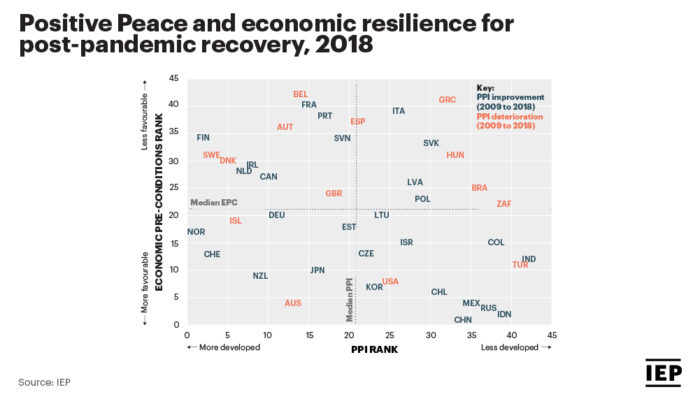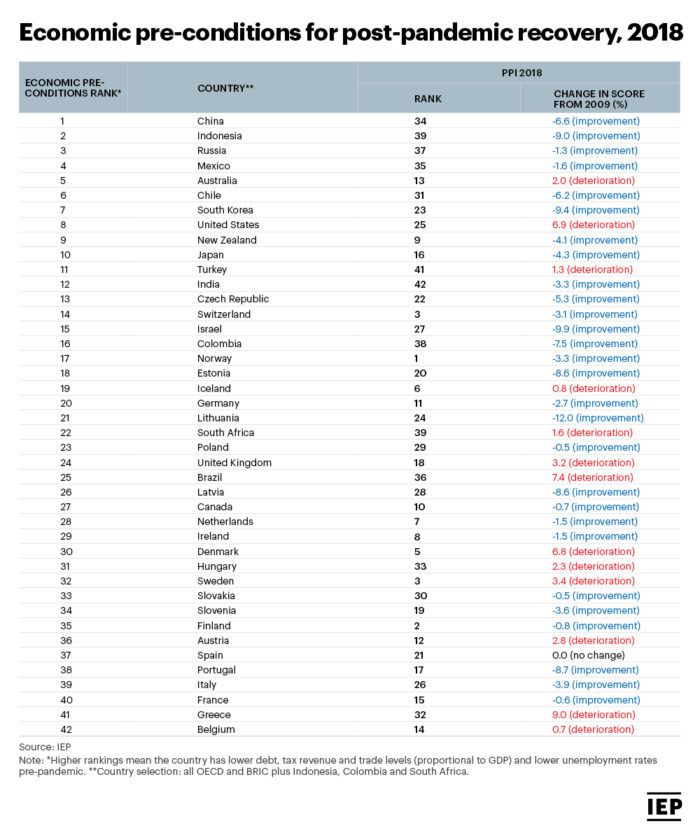COVID-19 highlighted the fragility and complexity of the global socio economic system, but high levels of Positive Peace within countries indicate societal resilience.
The two factors that will assist countries in the post-pandemic recovery are high levels of Positive Peace and favourable economic conditions before the pandemic, according to the COVID-19 and Peace report.
Out of the eight pillars of Positive Peace, countries with strong performance in Good Relations with Neighbours and Sound Business Environment before the pandemic are most likely to recover quickly.
These two Pillars were most heavily affected by COVID-19.

Countries with high performance in the Well-Functioning Governments Pillar and High Levels of Human Capital have been able to lessen the effects of the pandemic, and also have more capacity to recover faster.
Favourable economic conditions before the pandemic are also indicative of a country’s recovery, including low levels of government debt, a low unemployment rate, low tax revenue, and low dependence on international trade.
While the COVID-19 crisis highlighted the fragility and complexity of the global socio economic system, high levels of Positive Peace within countries indicate stronger levels of societal resilience and in the long-term, can create the optimal environment for human potential to flourish.

Positive Peace is measured by the Institute for Economics and Peace with a framework consisting of eight pillars:
The Positive Peace framework offers a way to structure thinking on how to reconstitute the fabric of the socio economic system.
The pathway to recovery will be long and arduous, but will also offer opportunities to rethink the vulnerabilities of the old economy and build a more resilient and productive system going forward.